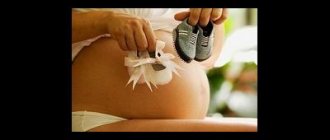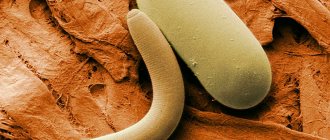Some statistics
Among the methods that obstetricians use to help a baby come into the world, there are two that are clearly outdated: forceps and vacuum extraction. If in the 70-80s they resorted to their help quite often. Now in Russian clinics this happens in 0.6% of cases. For comparison: in the UK, but according to different hospitals, forceps are used in 5-8% of cases, and a vacuum extractor in 2-4% of cases. By the way, old obstetricians said that the bad doctor is the one whose childbirth ends with the application of obstetric forceps. This means that he miscalculated the development of events and did not foresee all possible problems. Why such categoricalness? The fact is that both of these methods are fraught with complications for both the mother and her baby. If in a woman they can cause injury to the soft birth canal and bleeding, then in a child they can cause traumatic brain injury and hemorrhage in the brain and cranial cavity. Although these complications occur quite rarely, the desire of obstetricians not to take unnecessary risks is understandable.
Abdominal forceps
Abdominal obstetric forceps are also called atypical because they are applied typically (biparietally) to the head and atypically (in one of the oblique dimensions) in relation to the mother’s pelvis.
Cavity forceps are applied to the head located in the pelvic cavity, in its wide or narrow part. The application of obstetric forceps is more difficult for the doctor, the higher the head is located. Therefore, novice doctors or clinicians, non-specialists, are not recommended to resort to applying abdominal forceps to the fetal head, located in the widest part of the small pelvis.
The technique of applying abdominal obstetric forceps is much more complicated than that of weekend ones.
Before applying forceps, the obstetrician is obliged to perform a vaginal examination, during which he makes sure that the head is in the pelvic cavity, making sure to specify in which part, narrow or wide, the girdle of its fit is located. After this, the direction of the swept seam, the nature of the leading point and its position are specified. Only after this does the obstetrician have the right to apply forceps to the fetal head. The application of spoonfuls of forceps depends on the position of the fetus and its type.
In order to make it easier for a novice doctor to assess what oblique size (right or left) the sagittal suture is located and how to apply the forceps, it is most convenient to use the simple and accessible method of Prof. M.S. Malinovsky. This method is as follows: the obstetrician’s hands are aligned so that the palm surfaces are turned inward, and their back parts are in close contact. The angle between the palm surfaces should be straight (90°). The folded hands are brought to the genital slit, and a comparison is made between the sagittal suture and the application of the hands of the obstetrician. If the sagittal suture is in the right oblique dimension, then its direction coincides with the position of the right one, if in the left oblique dimension, it coincides with the location of the obstetrician’s left hand.
When the forceps are positioned in an oblique size, right or left, one of the spoons of the forceps will be located behind - corresponding to the sacroiliac joint, not far from the place of its insertion. The obstetrician will only have to give her an oblique position, which can be judged by the direction of the Bush hook. This spoon is called fixed. The second spoon, inserted into the vagina also from behind, from the side of the corresponding sacroiliac joint, must be moved higher to a considerable distance (on average 45° from the horizontal plane) so that it can take the oblique position it needs. Such a spoon is called a wandering spoon. The wandering spoon can be either a right or a left spoon, which depends on the position of the sagittal suture. When the sagittal suture is located in the right oblique size, the spoons of the forceps are applied in the opposite, left oblique size and the right spoon will wander; when the sagittal suture is located in the left oblique dimension, the forceps will be applied in the right oblique dimension, and the left spoon will be wandering.
The operation of applying abdominal obstetric forceps consists of the following 5 stages:
1. Insertion of spoons.
2. Closing the forceps.
3. Trial tractions.
4. Attractive tractions.
5. Removing the forceps.
Conditions for applying obstetric forceps: what do they do today?
Doctors previously resorted to the help of obstetric forceps and a vacuum extractor in the following cases: the baby does not have enough oxygen and needs to be removed as quickly as possible; his mother's efforts remain too weak even after the administration of medications; a correctly positioned placenta exfoliates prematurely; For some reason, the expectant mother’s well-being quickly deteriorates.
How do obstetricians solve all these problems now? They refer their patient for an emergency caesarean section. Numerous improvements have made this operation gentler, and the introduction of new, non-inflammatory suture material to prevent the complications of modern antibiotics has made it a safe alternative to many other procedures. Therefore, today obstetricians mostly opt for a more predictable option - a cesarean section. For example, if the expectant mother has moderate and high myopia (–7 and above), because of which she cannot push, several decades ago the birth of a child without forceps would have been impossible, but now he will be born with the help of operations.
Calculation complexity
You can use obstetric forceps and a vacuum extractor only under certain conditions. Both devices are intended only to help the baby move forward, but not to change the position of his head. Forceps are applied only in the second stage of labor (when the baby comes out) and only if the cervix is fully dilated (that is, 10 cm). It is necessary that by this moment the amniotic sac has already burst (usually this occurs towards the end of the 1st stage of labor, when the cervix dilates), and the amniotic fluid has flowed out. It is very important that the size of the woman’s bony pelvis is normal (that is, not narrowed), and that the circumference of the child’s head corresponds to the size of the mother’s pelvis and is inserted into it correctly, that is, with the back of the head facing the exit, facing the mother’s tailbone. Neither forceps nor a vacuum extractor should be used if at least one of these conditions is not met, otherwise both mother and baby may be injured.
Obstetric forceps
- This is a metal tool that resembles a spoon. They are placed on both sides of the baby’s head, or more precisely, on the ears and the area surrounding them. This procedure requires great skill and experience from the obstetrician: if the spoons are not on the sides of the skull, they can damage the eyes or the back of the head of the little one. In addition, the forceps are designed in such a way that they will not close if they are applied incorrectly.
Forceps are divided into two types - cavity and exit, depending on where the baby's head is located. If it has not yet passed the mother’s pelvic cavity, they are called cavitary, and if the head is about to appear outside, they are called weekend. By the way, in the first case, it is more difficult to apply forceps, and the danger of injuring a woman or child becomes greater. In general, this is done like this: having installed the spoons, the doctor, with gentle stretches, brings the baby’s head closer to the exit, and as soon as it is born, he immediately removes them, and then the baby gets out on his own. Exit forceps are applied when the little one has already made almost the entire journey on his own, his head has appeared outside, and an unfortunate hitch has occurred literally in the last centimeters of the journey.
Vacuum extractor
is a soft suction cup that is connected to a vacuum pump. It is attached to the baby's head and holds quite tightly. As in the case of forceps, the doctor helps the baby with gentle traction, and as soon as the baby’s head is born, he removes the instrument.
Obstetric forceps
The name itself will probably evoke associations with the distant Middle Ages for most readers. In a sense, they will be right: obstetric forceps were invented at the end of the sixteenth century. At that time, this was real progress in obstetric care. Caesarean section was practically not used at that time, and if some doctor undertook such a dangerous operation, it was only to save the life of the child - the mother in labor did not have a single chance. The forceps helped the baby to be born, eased too difficult labor and saved the mother’s life.
The appearance of this instrument will probably not inspire much confidence among the uninitiated: the third millennium and - some kind of tongs! In fact, this “out-of-date” and “backward” tool, albeit in rare cases, is still indispensable. Of course, medical science and practice have risen to cosmic heights compared to the 17th century. Many methods quickly become outdated, some are improved, and some are abandoned altogether. But the application of forceps is used in labor practice by experienced obstetricians in all countries of the world to this day. Over three centuries, their design and indications for use have changed significantly, and the benefits disproportionately outweigh the risk of complications.
Conditions of use
The application of obstetric forceps is possible only in the second stage of labor when the cervix is fully open, when the fetal head is in the pelvic cavity or at the exit from it.
The operation of applying obstetric forceps is quite painful: the nascent fetal head will be large due to the forceps placed on it, and therefore requires mandatory anesthesia. Most often, a short-term intravenous anesthesia is given, but if a woman gives birth under epidural anesthesia, the anesthesiologist will simply administer an additional amount of the painkiller used.
The use of forceps is often accompanied by an episiotomy - an operation to cut the perineum to expand the birth canal. This will prevent the formation of deep tears in the woman in labor.
The baby's head is captured only when it is almost at the exit from the female pelvis, which further increases the safety of the procedure. The shape of the instrument is maximally adapted to gently and safely for the fetus, but securely grasp the head of a newborn. With the help of proven professional movements (so-called traction
) an experienced obstetrician helps a newborn child pass through the birth canal. In addition, a sterile towel is usually placed between the handles of the forceps, which reduces the risk of excessive compression of the fetal head to almost zero. Let us repeat that this procedure is used exclusively in cases of serious difficulties in the natural passage of the child or the need to quickly complete the birth process and the impossibility of using other methods of childbirth. However, the baby's head should correspond to the average size of the head of a full-term fetus. Obstetricians formulate this condition somewhat differently: it should not be too large or too small. This is due to the size of the forceps, which are designed for the average size of the head of a full-term fetus. The use of obstetric forceps without taking this condition into account may result in too much trauma for the baby and mother.
Forceps also become a very dangerous instrument if you have a narrow pelvis, so their use is contraindicated. The operation of applying obstetric forceps is carried out only if all of the above conditions are present.
Mechanism of action
The purpose of the forceps is to tightly grasp the fetal head and replace the expelling force of the uterus and abdominal press with the attracting force of the doctor. The process of “pulling out” a baby cannot in any way be called violent: traction
are applied almost effortlessly, no artificial rotations or any displacement of the fetal head are made. The obstetrician's movements carefully copy the movements of the baby's head and shoulders that he would make during natural childbirth.
During traction
the doctor can also make rotational movements, but only following the natural movement of the fetal head. In this case, the doctor does not prevent the head from turning, but, on the contrary, promotes it.
Indications for use
There are several indications for this procedure. Firstly
, the state of health of the woman in labor, which requires the maximum shortening of the period of expulsion of the fetus, the exclusion of pushing and straining of the woman in labor: diseases of the cardiovascular and bronchopulmonary systems, kidneys, heart failure, very severe late toxicosis.
Secondly
, obstetric forceps are applied when efforts are weak or labor is weak.
In this case, the fetal head stands in one plane of the pelvis for over 2 hours, which can lead to excessive fatigue of the woman in labor and very serious obstetric complications. In the second stage of labor, the fetal head passes through a fairly narrow bone ring - the pelvic cavity. Difficulty in the advancement of the fetal head is fraught with unpleasant consequences for both the child and the mother: the pelvic bones compress the fetal head, the skull bones, in turn, put pressure on the soft tissues of the woman’s birth canal, which leads to various injuries. Therefore, if medications, such as intravenous oxytocin, which causes the uterus to contract, do not help the birth of the baby, forceps must be used. Thirdly
, bleeding in the second stage of labor, caused by premature detachment of a normally located placenta, rupture of the umbilical cord vessels during their membrane attachment.
Fourthly
, in case of acute intrauterine hypoxia (oxygen starvation) of the fetus, when delaying labor will inevitably lead to the death of the child and literally minutes count (with a short umbilical cord, its entwinement around the child’s neck).
Preparation and performance of the operation
Based on the well-known truth “forewarned is forearmed,” and, I would add, “rest assured,” I will try to describe in detail what awaits you during preparation for the operation and its implementation.
Preparation for the operation of applying obstetric forceps includes several points: choosing a method of anesthesia, preparing the woman in labor, examining the vagina and determining the position of the fetus, checking the forceps.
During the operation of applying obstetric forceps, the woman in labor lies on her back, with her legs bent at the hips and knees. Before surgery, the bladder must be emptied. The external genitalia and inner thighs are treated with a disinfectant solution.
Let us repeat once again that due to the fact that when removing the fetal head with forceps, the risk of perineal rupture increases, the application of obstetric forceps is combined with an episiotomy. When inserting spoons, the obstetrician grips the handle of the forceps in a special way: a special type of grip avoids the application of force when inserting it.
The left spoon of the forceps is inserted first. Standing, the doctor inserts four fingers of his right hand into the vagina into the left half of the pelvis, separating the fetal head from the soft tissues of the birth canal. The thumb remains outside. Taking the left spoon with your left hand, the handle is moved to the right side, placing it almost parallel to the right groin fold. Then carefully, without any effort, the spoon is moved between the palm and the fetal head deep into the birth canal. In this case, the trajectory of the end of the handle seems to describe an arc. The advancement of the entire branch into the depths of the birth canal occurs almost due to the instrument’s own gravity. The hand located in the birth canal is a guiding hand and controls the correct direction and location of the branch. With its help, the obstetrician makes sure that the top of the spoon is not directed into the fornix, onto the side wall of the vagina and does not capture the edge of the cervix. Next, under the control of the left hand, the obstetrician inserts the right branch into the right half of the pelvis with the right hand in the same way as the left.
The spoons grasp the baby's head at the widest point in such a way that the parietal tubercles are located in the windows of the forceps spoons, and the line of the forceps handles faces the leading point of the fetal head. Tractions
they try to carry out simultaneously with contractions, thus strengthening the natural expelling forces.
Possible complications
Let us emphasize once again that timely and correctly applied forceps do not have a negative impact on the health of the woman and child.
Complications in the baby.
Most often, the consequences of using obstetric forceps are expressed in reddish, loop-shaped marks that remain on the baby’s head and face. Usually these marks disappear within the first month without any medical intervention. Due to too much pressure from the spoons of the forceps on the presenting part of the fetus, hematomas can occur, and damage to the skin or facial nerve is possible. In exceptional cases, infants have eye injuries, damage to the brachial plexus (manifested by a “dangling” arm in the child). The use of forceps may also cause damage to the uterus, bladder, or sciatic nerve roots.
Complications for mom.
These include possible ruptures of the vagina and perineum, and less commonly, the cervix. Severe complications can include ruptures of the lower segment of the uterus and damage to the pelvic organs: bladder and rectum. But such things can only happen if the conditions for the operation and the rules of the technique for carrying it out are violated, which is basically impossible in modern maternity hospitals.
But still!…
Of course, applying obstetric forceps is an unpleasant procedure; like, in fact, any operation, it also has dangerous moments. I assure women that no one will resort to this procedure just like that, for a “preventative” purpose. It is carried out only when absolutely necessary, when there is no other way out and it is really about saving the baby’s life. But if you happen to experience first-hand the techniques of ancient obstetrics in modern conditions, do not panic, but simply perceive it as a conscious need that helps your long-awaited baby see the light.
Obstetric forceps were invented by Scottish physician William Chamberlain in 1569.
For many years, this instrument remained a family secret, passed down only by inheritance: the doctor’s family and his descendants made considerable wealth from this invention. As happened with many scientific discoveries, 125 years later, in 1723, obstetric forceps were again “invented” by the Dutch surgeon I. Palfin. These were already more enlightened times, so the surgeon immediately made his invention public and submitted it for testing to the Paris Academy of Sciences, for which he was rewarded: priority in the invention of obstetric forceps belongs to him. Although it is believed that these forceps are less perfect than the Chamberlain instrument. In Russia, obstetric forceps were first used in 1765 in Moscow by Moscow University professor I.F. Erasmus. However, the credit for introducing this operation into everyday practice belongs to another outstanding doctor, the founder of Russian scientific obstetrics Nestor Maksimovich Maksimovich-Ambodik. He described his personal experience in the book “The Art of Weaving, or the Science of Womanizing,” published in 1786. Based on his drawings, the Russian “toolmaker” Vasily Kozhenkov in 1782 made the first models of obstetric forceps in Russia. Subsequently, domestic obstetricians Anton Yakovlevich Krassovsky, Ivan Petrovich Lazarevich and Nikolai Nikolaevich Fenomenov made a great contribution to the development of the theory and practice of the operation of applying obstetric forceps.










